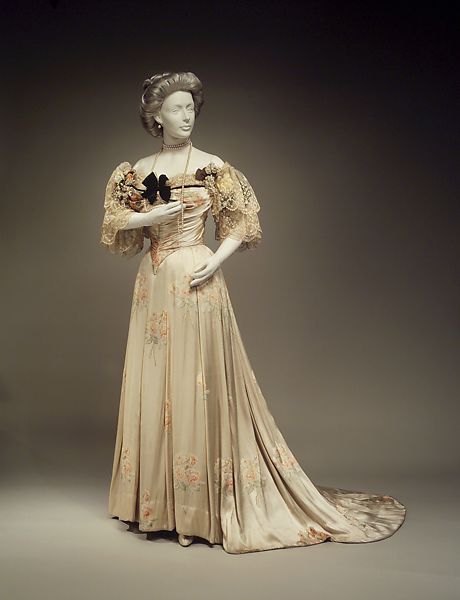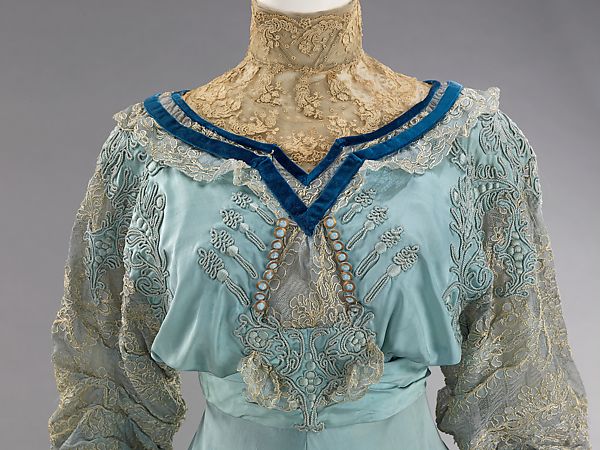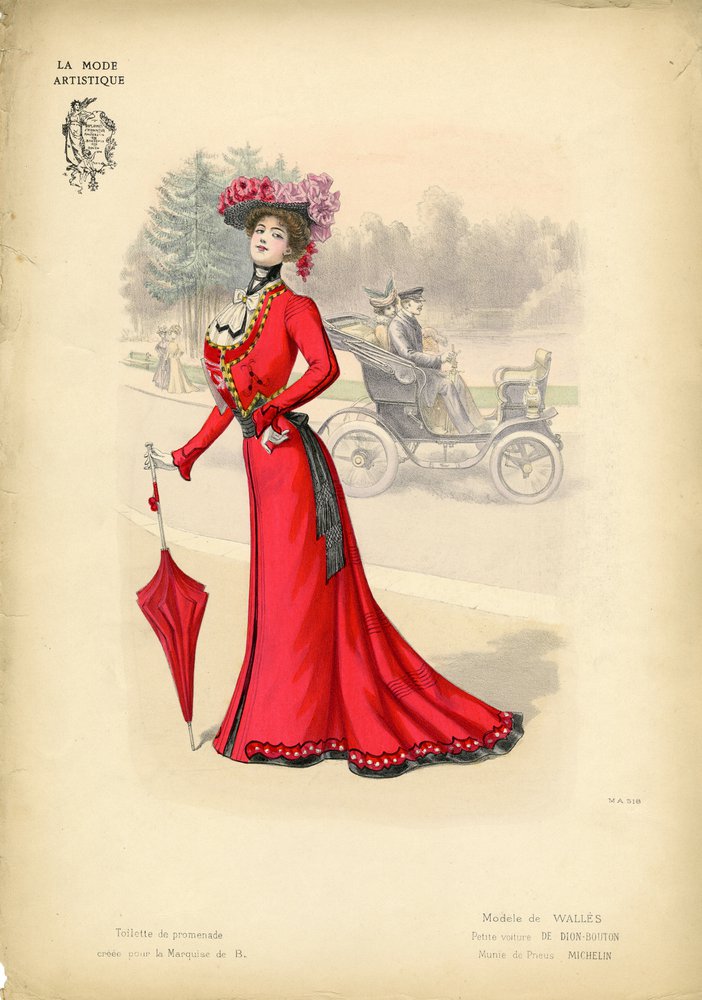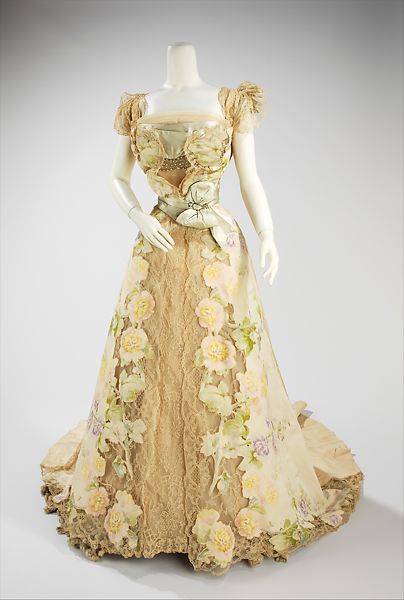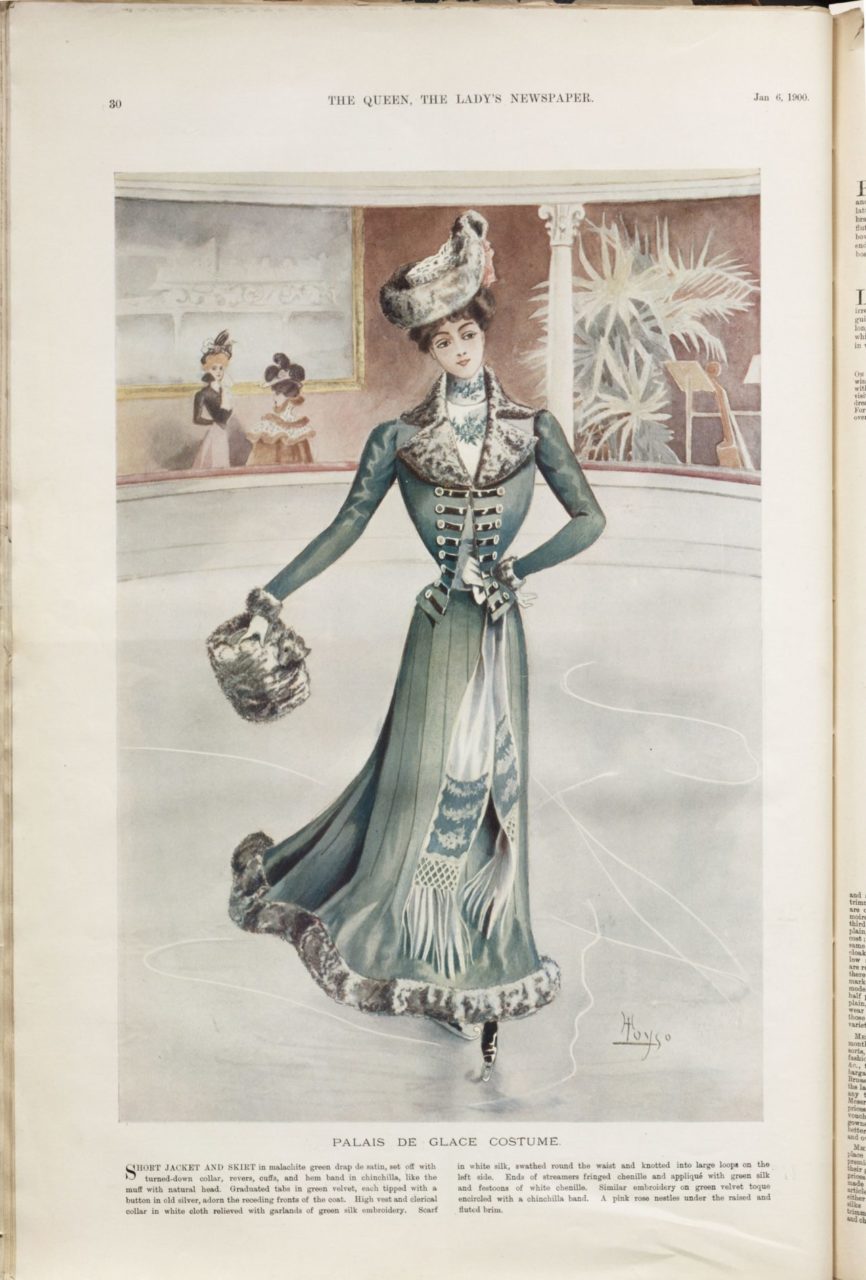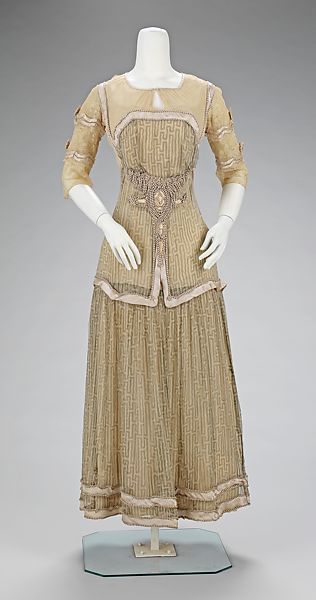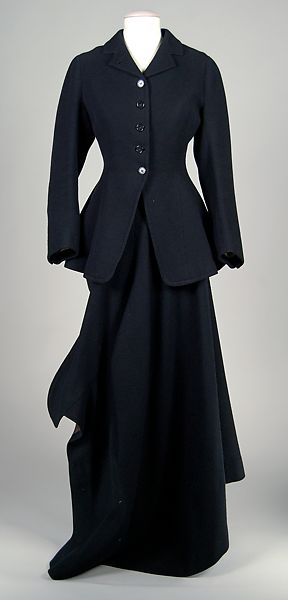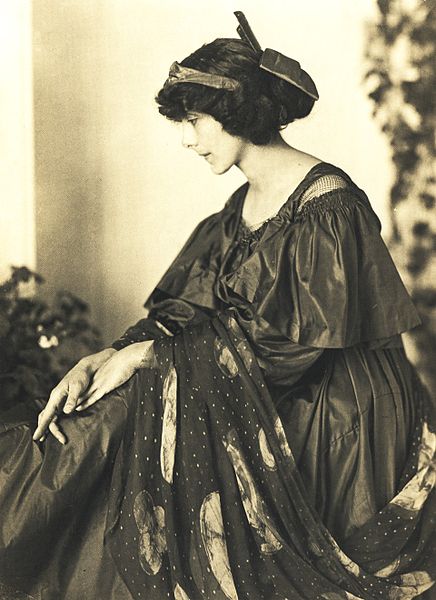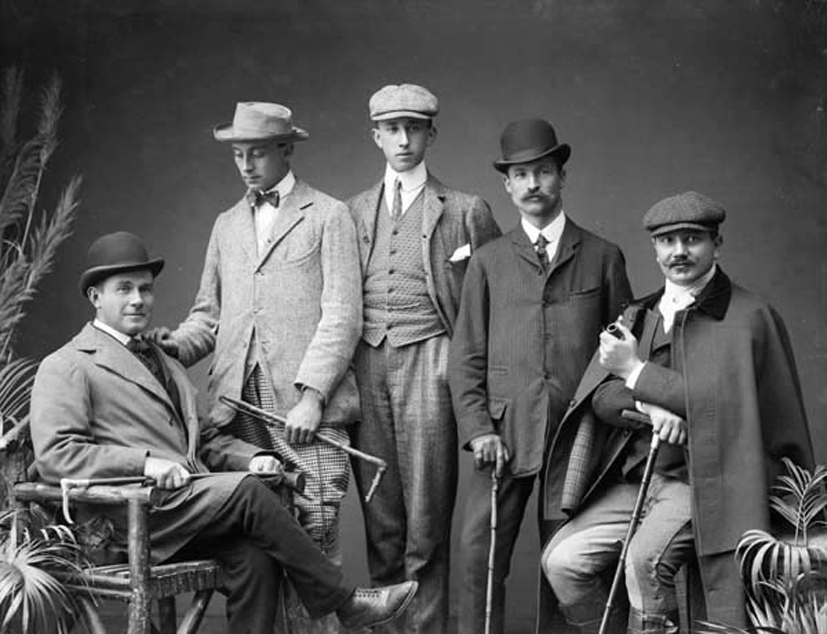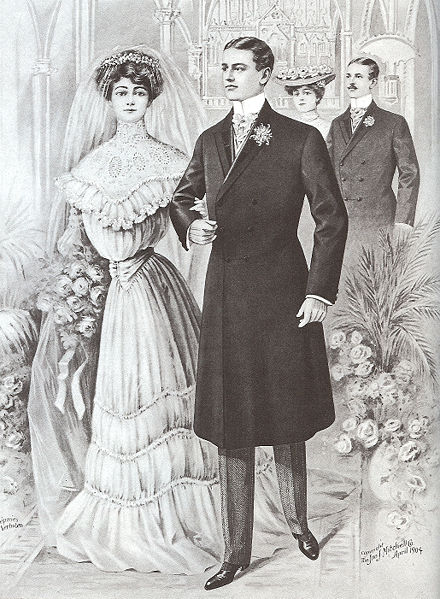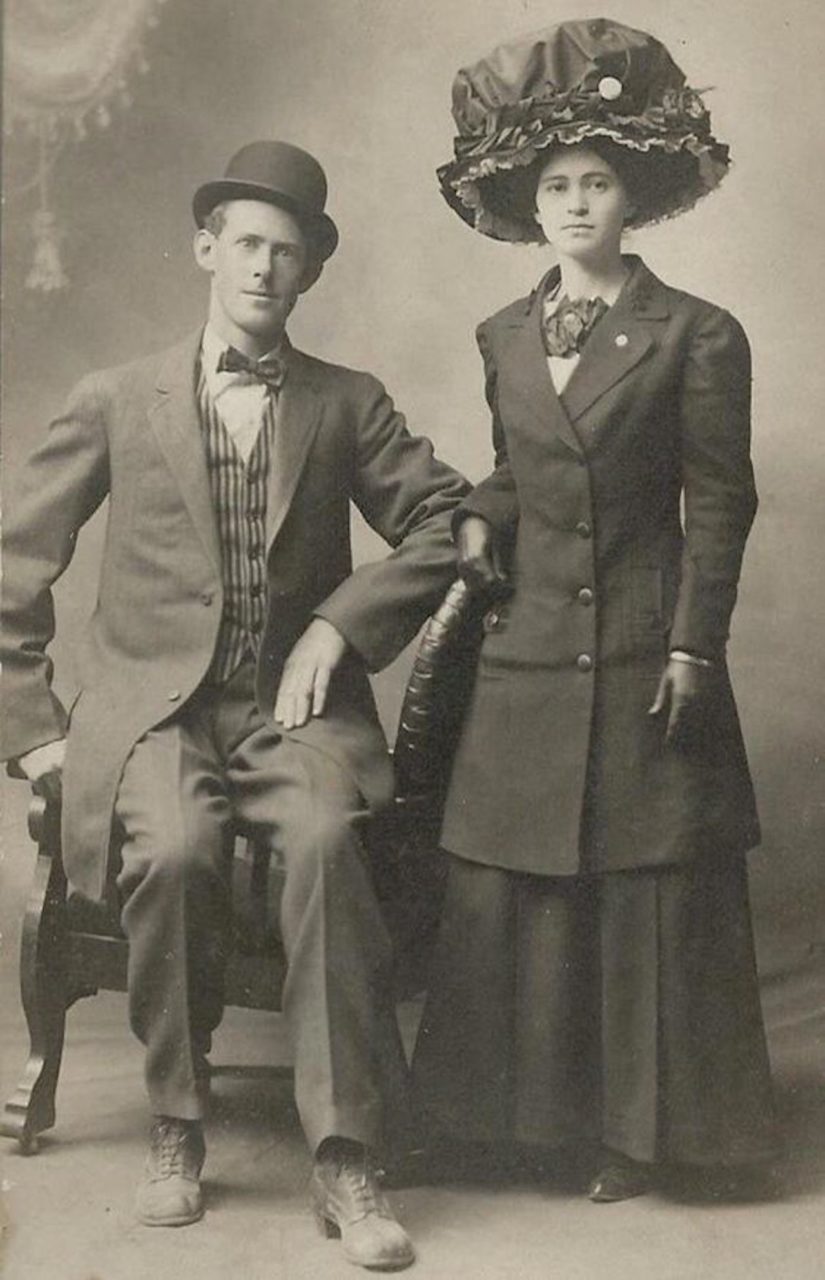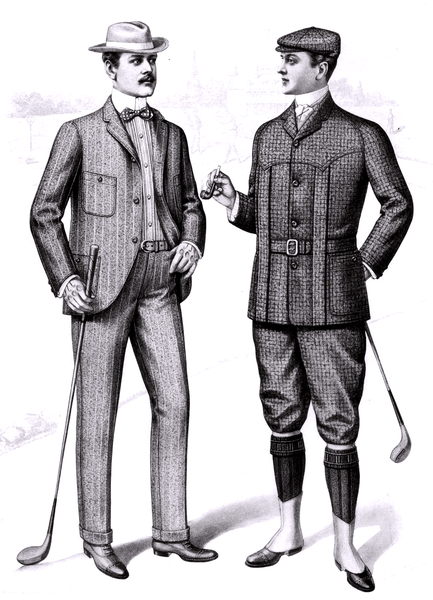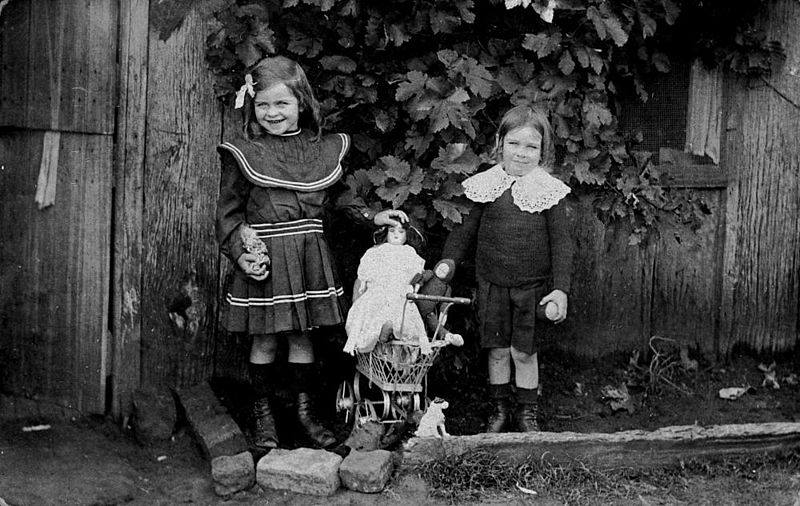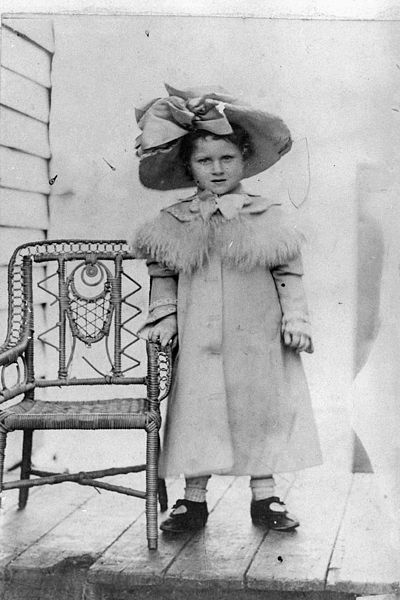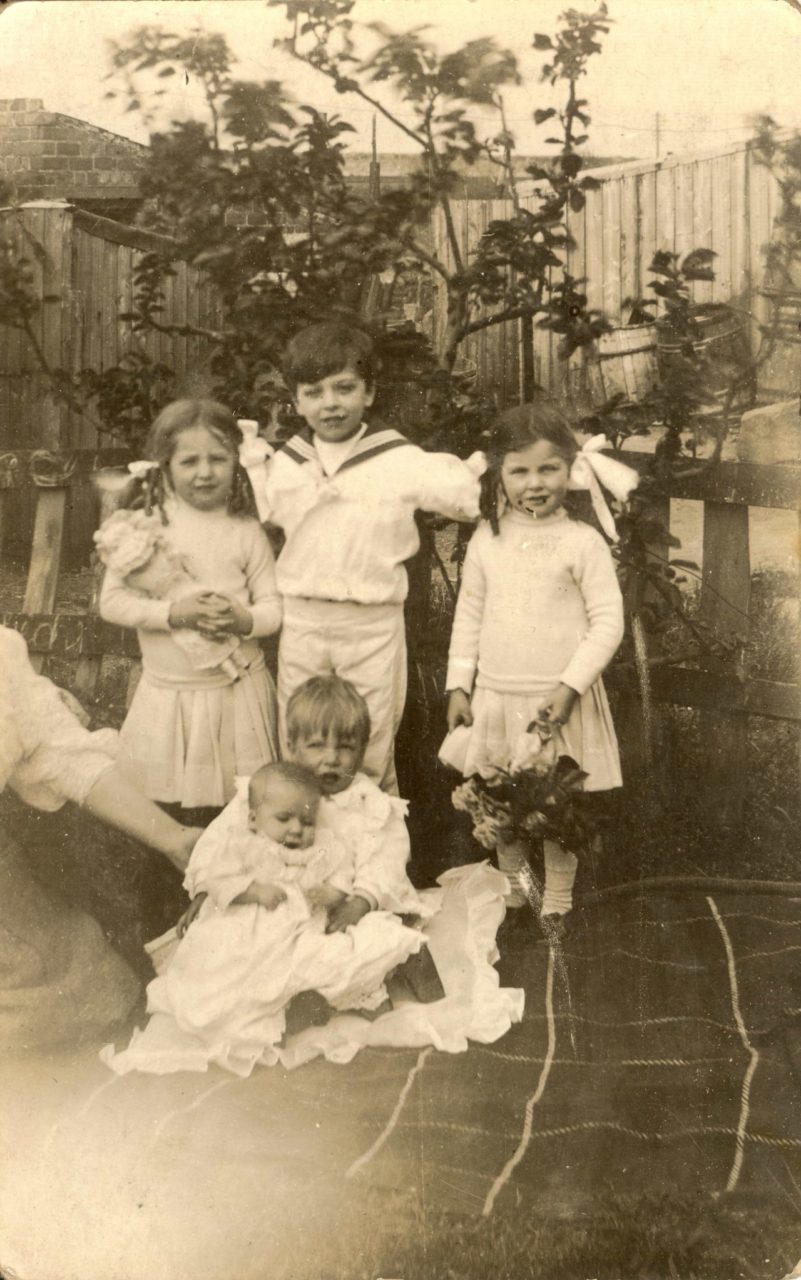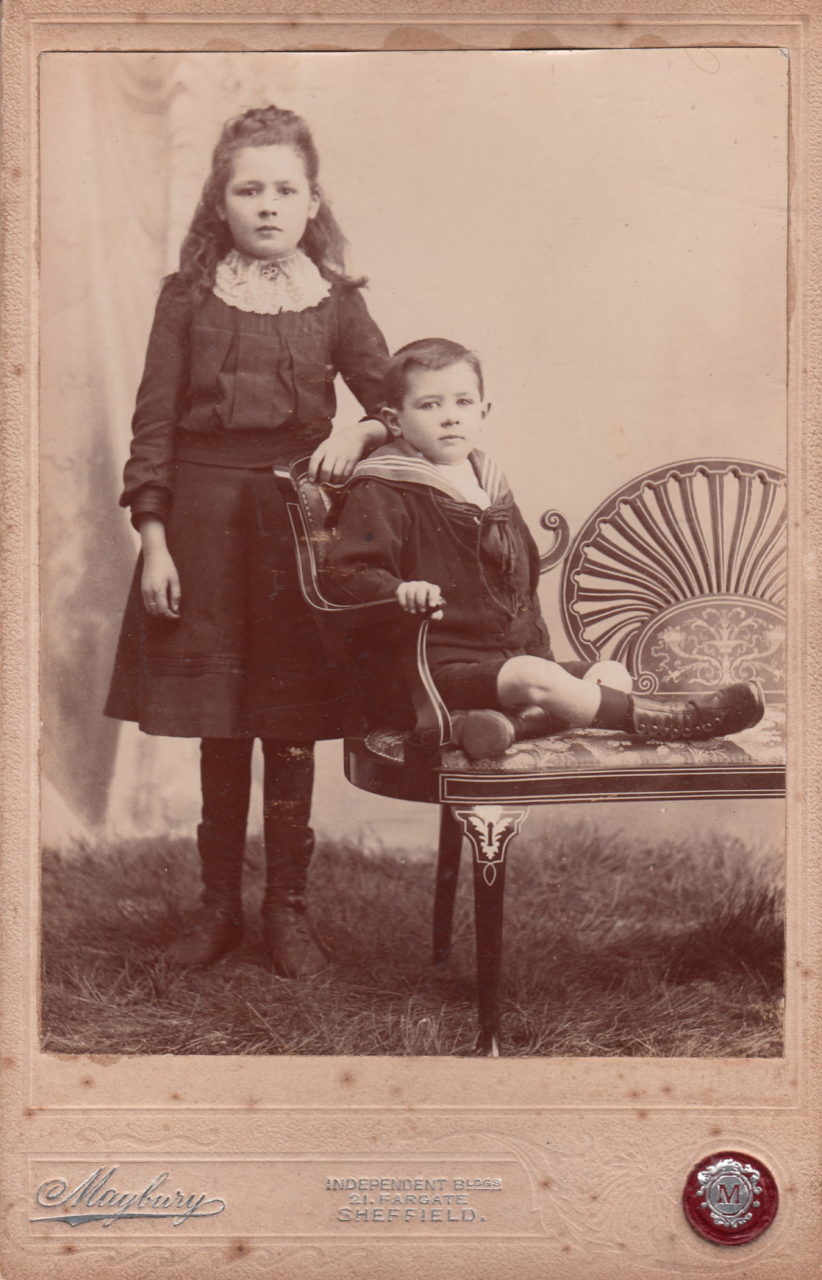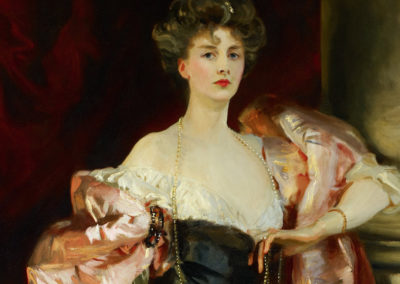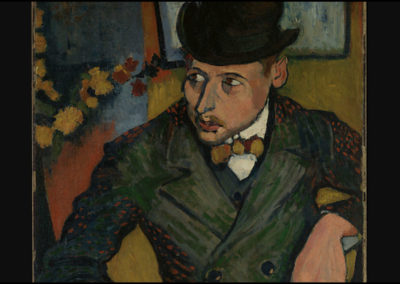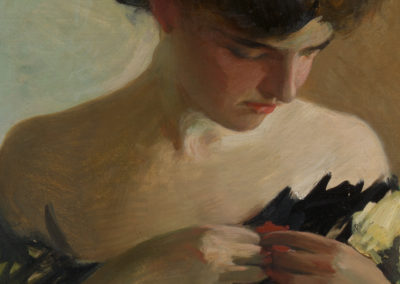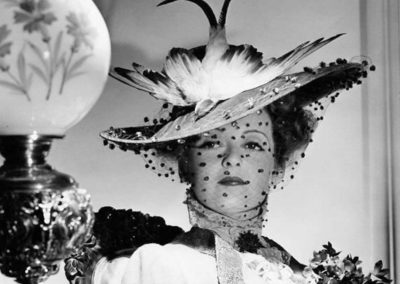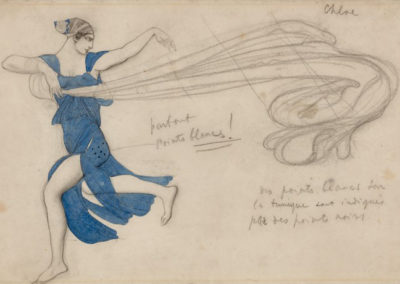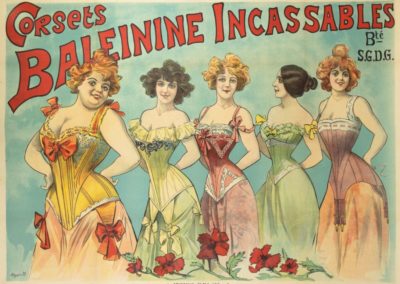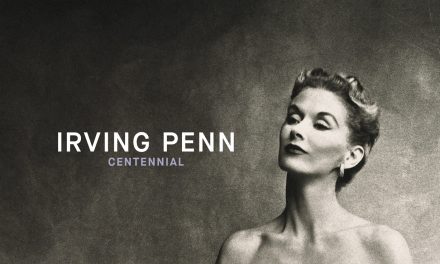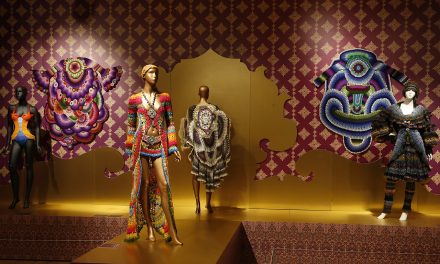OVERVIEW
While technology progressed in the first decade of the twentieth century, fashion largely remained the same. Subtle changes in silhouette occurred in womenswear until the tubular shape of the 1910s was beginning to emerge by the end of the decade. Lace and other embellishments were key. Menswear continued to see the suit as the primary style, though the tuxedo became increasingly acceptable as formal wear in the evening. Children continued to be dressed like mini-adults and styles such has the sailor suit continued to be popular options.
Womenswear
Fashion for women in the first decade of the twentieth century largely followed the fashion of the previous century. The highly structured silhouette of the Gibson Girl was still popular at the beginning of the decade. The simplification and loosening of dress that would come to define the century did not begin to appear until late in the decade and early in the next. Instead, modest dresses, bodies moulded by corsets, and ostentatious ornamentation dominated women’s fashion throughout the first ten years of the century.
For a large part of the decade, the fashionable silhouette continued to be dominated by the S-shape created by a new “health” corset. These corsets pushed the bust forward and the hips back in an attempt to avoid pressure on the abdomen (Laver 213). The shape emphasized a narrow waist and large “mono-bosom,” which can be seen in the fashion illustration by La Mode Artistique (Fig. 3) and the early 1900s dinner dress by the House of Worth (Fig. 4). Tops were blousy and loose, like that in figure 5, the extra fabric helping to emphasize this top-heavy shape. Sleeves were equally dramatic. The effect was enhanced with petticoats that had full backs and smooth fronts (Milford-Cottam 15).
Modesty was emphasized with day dresses covering the body from the neck to the floor and long sleeves covering the arms. Skirts were bell-shaped and lace was a popular decoration (Laver 216). For those who couldn’t afford lace, Irish crochet was a good alternative (Laver 216). Rich fabrics were used with silk satin and chiffon two popular choices. Colors were light, but embellished with decorations. Editor Kathryn Hennessy writes in Fashion: The Ultimate Book of Fashion and Style, “Sumptuous fabrics such as silk satin, damask, and chiffon, usually in light, soft colours, were decorated with lace, rhinestones, and spangles, often highlighting a part of the body or the face” (232). Daniel Milford-Cottam adds in Edwardian Fashion, “The most fashionable daywear was often as elaborately trimmed and accessorized as evening wear” (16). This can be seen in the bodice of the afternoon dress by Jeanne Paquin (Fig. 2). Overall, the prevailing look was that of a mature, sophisticated, and graceful woman, like that seen in the cream silk gown by the House of Worth (Fig. 1).
Fig. 1 - Jean-Philippe Worth (French, 1856–1926). Evening dress, 1905. Silk. New York: Brooklyn Museum Costume Collection at The Metropolitan Museum of Art, 2009.300.309a, b. Gift of the Brooklyn Museum, 2009; Gift of Mrs. C. Oliver Iselin, 1961. Source: The Metropolitan Museum of Art
Fig. 2 - Jeanne Paquin (French, 1869–1936). Afternoon dress, 1906-8. Silk. New York: Brooklyn Museum Costume Collection at The Metropolitan Museum of Art, 2009.300.1596a, b. Gift of the Brooklyn Museum, 2009; Gift of Mrs. Robert G. Olmsted and Constable MacCracken, 1969. Source: The Metropolitan Museum of Art
Fig. 3 - Artist unknown. Toilette de Promenade, Fashion plate from La Mode Artistique, 1903. Lithograph. New York: Fashion Plates: 150 Years of Style. Source: SPARC Digital
Fig. 4 - Jean-Philippe Worth (French, 1856–1926). Dinner dress, ca. 1900. Silk, metal, rhinestones. New York: Brooklyn Museum Costume Collection at The Metropolitan Museum of Art, 2009.300.3276a, b. Gift of the Brooklyn Museum, 2009; Gift of Mrs. Paul Pennoyer, 1965. Source: The Metropolitan Museum of Art
Fig. 5 - Artist unknown. Fashion plate from La Moda Elegante Ilustrada, December 30, 1905, December 30, 1905. Lithograph. New York: Fashion Plates: 150 Years of Style. Source: SPARC Digital
Fig. 6 - Jean-Philippe Worth (French, 1856–1926). Evening dress, 1902. Silk, rhinestones, metal. New York: Brooklyn Museum Costume Collection at The Metropolitan Museum of Art, 2009.300.2009a, b. Gift of the Brooklyn Museum, 2009; Gift of Mrs. C. Oliver Iselin, 1961. Source: The Metropolitan Museum of Art
Evening dress largely followed the same silhouette, though these gowns were more revealing with very low décolletage and short sleeves. The sleeve length was offset by the wearing of long gloves. Milford-Cottam writes, “The cut of the bodice was often the only way to tell an evening gown from an afternoon dress” (23). Where day dresses had blousy, high-collared bodices, evening gowns had more fitted bodices with low-cut necks, like that seen in the elaborate gown from 1902 (Fig. 6). Sleeves could also be draped and necklines were sometimes off-the-shoulder.
While the wealthy woman wore the extravagantly decorated styles of the 1900s, many women were beginning to work outside the home. These women needed something more practical to wear and this came in the form of the “tailor-made.” These suits were introduced in the late 1800s and both working and wealthy wore them in the 1900s. James Laver writes in Costume and Fashion: A Concise History, “Even rich women wore tailor-mades in the country or when traveling” (221). The suits allowed women to change the bodice or the blouse while keeping the skirt, an economic way to stay fashionable (Fig.7).
While the prevailing mode favored the embellished day and evening dresses, women began to emphasize the importance of dressing for the occasion. Milford-Cottam writes,
“Event-specific dressing was increasingly important, and smart people took care to dress appropriately for the occasion. The wealthiest women had multiple costumes, ranging from theatre and evening gowns to morning and afternoon dresses and practical costumes for hunting, yachting and other active pursuits.” (16)
Fig. 7 - Artist unknown. Palais de Glace Costume, Fashion plate from The Queen, January 6, 1900, 1900. Lithograph. New York: Fashion Plates: 150 Years of Style. The Queen. Source: SPARC Digital
Fig. 8 - Jeanne Paquin (French, 1869–1936). Afternoon dress, 1909. Silk. New York: Brooklyn Museum Costume Collection at The Metropolitan Museum of Art, 2009.300.1618. Gift of the Brooklyn Museum, 2009; Gift of Julian Asion, 1988. Source: The Metropolitan Museum of Art
Fig. 9 - Jean-Philippe Worth (French, 1856–1926). Dinner dress, 1908-10. Silk, rhinestones. New York: Brooklyn Museum Costume Collection at The Metropolitan Museum of Art, 2009.300.1293. Gift of the Brooklyn Museum, 2009; Gift of Mrs. Harry T. Peters, 1962. Source: The Metropolitan Museum of Art
Various sports began to creep into fashion during this period with golf, tennis, cycling and motoring all inspiring their own styles. A British riding habit from this period can be seen in figure 10. Milford-Cottam writes of the clothing worn for these pursuits, “For these, many women chose outfits intended to serve both as sporting wear and as serviceable, neat daywear” (19).
As the decade progressed, fashions began to soften. The rigid S-bend shape popular in the early part of the decade gradually straightened out into a more natural shape. Laver writes, “The bust was no longer thrust quite so far forward, nor the hips so far back. Floppy blouses hanging over the waist in front were abandoned” (222). The loose tops and oversized sleeves became narrower, as did skirts. Waists were higher and the tubular silhouette that would become popular in the next two decades began to emerge (Figs. 8 & 9). Milford-Cottam describes how fashion changed throughout the first decade:
“During the course of the first decade of the century the fashionable silhouette had changed dramatically. When Edward VII came to the throne, the smart woman was pyramidal, her extravagantly full hem sweeping upwards to the apex of a high-dressed hairstyle with a relatively small hat. At the time of his death in May 1910, almost a full decade later, the pyramid was upside-down, with exaggeratedly wide-brimmed hats tapering downwards into narrow hems, with a neatly shod foot providing the point of the new heart-shaped silhouette.” (37)
As fashion moved into the 1910s, styles were moving quickly towards the slimmed down shapes that would dominate the next two decades, while embellishment and long skirts continued from earlier in the decade.
Fig. 10 - W. Volker (British). Riding habit, 1900-1909. Wool. New York: Brooklyn Museum Costume Collection at The Metropolitan Museum of Art, 2009.300.79a, b. Gift of the Brooklyn Museum, 2009; Gift of the Princess Viggo in accordance with the wishes of the Misses Hewitt, 1931. Source: The Metropolitan Museum of Art
Fashion Icon: Anna Muthesius (1870-1961)
Fig. 11 - Jacob Hilsdorf (1872-1916). Porträt der Modedesidnerin Anna Muthesius, 1911. Nicola Perscheid, Theodor und Jacob Hilsdorf, August Sander. Der rheinland-pfälzische Beitrag zur Geschichte der Photographie. Katalog Landesmuseum Mainz 1989.. Source: Wikimedia Commons
Not a fashion icon in the strictest sense, Anna Muthesius (Fig. 11) encouraged women in the early 1900s to dress individually, encouraging the aesthetic dress of the period. In 1903, she published Das Eigenkleid der Frau (Women’s Own Dress) which urged readers to eschew Paris fashions (Hennessey 236). What this looked like varied, but themes of practicality, freedom of movement and Art Nouveau patterns were consistent.
Aesthetic dress in the 1900s saw influence from Eastern patterns, the Arts and Crafts movement and Greco-Roman loose draped clothing. Milford-Cottam writes,
“Foreign textiles such as Japanese and Chinese silks and Middle Eastern embroideries were admired for their aesthetic qualities and beautiful colouring, which offered an alternative to the early 1900s predilection for muted tints and soft, faded effects.” (30)
Aesthetic dress was primarily worn at home, but some women did find a way to incorporate it into their everyday wear. The London department store Liberty is known for its integration of the artistic dress influence. While Anna’s legacy may not be well-known today, the influence of the aesthetic and artistic dress movements manifested in the early part of the next decade in the designs of Paul Poiret and others.
Menswear
Like most of the first half of the twentieth century, men’s fashion moved much slower than women’s. There weren’t great changes to the prevailing menswear modes, but rather subtle changes in details and accessories. What men wore continued to be ruled by the appropriateness for the event and men could wear suits in varying degrees of formality.
Throughout the decade, the most formal option for men was the frock coat during the day and tails in the evening (Fig. 14). However, Milford-Cottam comments, “The frock coat was beginning to be thought old-fashioned by 1901, suitable only for Sundays or the most conservative daywear” (39). During the day, the three-piece suit dominated (Fig. 12), though colors and materials were more varied (though not too daring). Morning dress was worn for the most formal daytime occasions (Fig. 17). Neckties were essential and allowed for a small pop of color. Though soft-front shirts were introduced during this period, they would not become widespread until the 1920s. Instead, starched shirt-fronts with high collars were worn with the three-piece suit.
Though the suit was still the primary daywear, clothing associated with various sporting pursuits was becoming increasingly acceptable as daywear. Hennessey writes,
“Other garments that were used for sport were cardigans for tennis, cricket, and baseball as well as increasingly for leisure wear, and thick, woolen sweaters seen on motorcyclists and skiers. Woolen jumpers were also popular with fishermen – workwear being another source for fashion innovation.” (226)
Fig. 12 - L.S. Davidson (American). Suit, 1903. New York: Brooklyn Museum Costume Collection at The Metropolitan Museum of Art, 2009.300.655a–c. Gift of the Brooklyn Museum, 2009; Gift of Arthur W. Clement, 1940. Source: The Metropolitan Museum of Art
Fig. 13 - Mr Corbella. Imperial Hotel, The Mall, Waterford, September 8, 1903. The National Library of Ireland. Source: Flickr
Fig. 14 - Jno Mitchell Co.. Frock Coat April 1904, 1904. Source: Wikimedia Commons
Fig. 15 - Photographer unknown. Wedding Photography, ca. 1900s. Source: Pinterest
Fig. 16 - Artist unknown. Fashion plate of men's golfing clothes, from the Sartorial Arts Journal, New York, 1901, 1901. Source: Wikimedia Commons
Fig. 17 - Jno Mitchell Co.. Morning dress, 1901. Source: Wikimedia Commons
Knickerbockers and tweeds worn on the golf course were also acceptable daywear (Fig. 16). Milford-Cottam describes other popular day looks that popped up at sporting events in England:
“By 1901, men attending spectator sports in the summer were increasingly wearing flannel and linen suits, straw Panama or boater hats, blazers, white trousers, and, of course, the royal-approved homburgs [a type of hat] and tweeds.” (39)
Some of these looks can be seen in figure 13, while a homburg hat is featured in figure 15. Besides sporting looks, the lounge suit was another option, with light colored suits especially popular in the summer.
Evening wear continued to be very formal, though the tuxedo, which was seen as less formal at the time, was becoming increasingly acceptable. While older, more conservative men continued to wear tails, the tail-less dinner jacket of the tuxedo continued to rise in popularity during the decade. Despite this, tailcoats were still seen as the most formal attire. Milford-Cottam explains the evening options throughout the decade:
“Evening dress consisted of a black coat and coordinating trousers, often worn with an expanse of crisp, starched white shirt-front and a low-cut waist-coast, which could be in either black, matching the suit, or white to coordinate with the shirt.” (41)
He continues to explain that the bow tie would be coordinated with the waistcoat, with white ties and waistcoats seen as more formal.
Like womenswear, hats and gloves continued to be worn. Black shoes were the most acceptable, though gray, brown and tan were acceptable during the day. By the end of the decade, men’s fashion largely looked the same as it did at the beginning. Menswear would further stall in the following decade due to the First World War.
CHILDREN’S WEAR
The new century did not bring drastic changes in children’s wear. Children continued to be dressed as mini-adults (Fig. 18) with many of the styles found in menswear and womenswear making their way into children’s wear. Themes found in fashion for both boys and girls included light colors and stiffly starched material.
For girls, light colors and lace, like in womenswear, were popular choices. Young girls wore dresses to their knees embellished with lace on the bodice and stiffly starched material (Figs. 21 & 22). For less formal wear, girls might wear pinafore dresses over blouses and their clothing tended to be much simpler than their adult counterparts.
Along with the dresses, girls wore black stockings and shoes (Fig. 18). In the winter, they might wear lace up boots. Like women, girls wore gloves with their outfits: kidskin in the winter and crochet in the warmer months. Their hair was decorated with ribbon (Figs. 18, 20 & 22).
Fig. 18 - Cecil Plains. Portrait of two children with dolls in a garden, 1900-1910. Item is held by John Oxley Library, State Library of Queensland. Source: Wikimedia Commons
Fig. 19 - Photographer unknown. Portrait of Marjory Bryson as a little girl, Queensland, ca. 1905. Item is held by John Oxley Library, State Library of Queensland.. Source: Wikimedia Commons
Fig. 20 - Photographer unknown. The (almost) hidden mother, ca. 1910. Postcard. pellethepoet. Source: Flickr
Fig. 21 - Maybury. Jessop Children, 1905. Cabinet card. pellethepoet. Source: Flickr
Fig. 22 - Photographer unknown. Edwardian Children, ca. 1900-1910. Source: Pinterest
Young boys wore shorts or knickers along with tunics or “Russian blouses” like the one in figure 22 which allowed for young boys to move freely. Like young girls, boys wore long stockings to cover up the rest of their leg. Older boys wore suits that followed their adult counterparts. Black shoes and boots were popular for boys, as well. Just as girls wore starched dresses, boys wore stiff Eton collars outside their jackets. Sailor suits continued to be popular for boys, as well (Figs. 20 & 21).
Both children and adults wore light-colored clothing which demonstrated a family’s wealth (Figs. 20 & 22). Milford-Cottam writes,
“However, maintaining the whiteness and cleans of outer garments was time-consuming, and negated any illusion of practicality that washability might suggest. Similar themes were seen in the best clothes of well-off Edwardian children, whose spotlessly laundered, elaborate white frocks, coats and sailor suits advertised how their parents and nurses had both money and time to dedicate to maintaining their attire.” (25-26)
Even for young children, clothing had to the ability to give an insight to their wealth and class.
References:
- “1900s in Western Fashion.” Wikipedia. Accessed December 30, 2019. https://en.wikipedia.org/wiki/1900s_in_Western_fashion#Children’s_fashion.
- Hennessey, Kathryn. Fashion: The Ultimate Book of Costume and Style. London: Dorling Kindersley, 2012. http://www.worldcat.org/oclc/816318024.
- Laver, James, Amy De La Haye and Andrew Tucker. Costume and Fashion: A Concise History. 5th ed. New York: Thames & Hudson, 2012. http://www.worldcat.org/oclc/966352776.
- Milford-Cottam, Daniel. Edwardian Fashion. Oxford: Shire Publishing, 2014. http://www.worldcat.org/oclc/1016592070.
- Turner, Grahame. “Children’s Clothing in the 1900s,” September 28, 2017. Our Everyday Life. Accessed December 30, 2019. https://oureverydaylife.com/childrens-clothing-in-the-1900s-12485202.html.
- Victoria and Albert Museum. “History of Fashion 1900 – 1970.” Accessed August 31, 2019. http://www.vam.ac.uk/content/articles/h/history-of-fashion-1900-1970/.
- Victoria and Albert Museum. “Introduction to 20th-Century Fashion.” Accessed August 31, 2019. http://www.vam.ac.uk/content/articles/i/introduction-to-20th-century-fashion/.
Historical Context
Wikipedia: 1900-1909
Events:
- 1900 – Brownie camera invented allowing for the “snapshot”
- 1900 – L. Frank Baum published The Wizard of Oz
- 1901 – President William McKinley is assassinated and Theodore Roosevelt becomes president
- 1901 – Queen Victoria dies and Edward VII becomes king
- 1903 – The Wright Brothers fly for the first time
- 1903 – Ford Motor Company produces the first car
- 1908 – The Ford Model T is introduced and becomes the first affordable car
Timeline Entries
Primary/Period Sources
Resources for Fashion History Research
To discover primary/period sources, explore the categories below.
Have a primary source to suggest? Or a newly digitized periodical/book to announce? Contact us!
Periodicals (Digitized)
Filmography
Secondary Sources
Also see the 20th-century overview page for more research sources... or browse our Zotero library.


